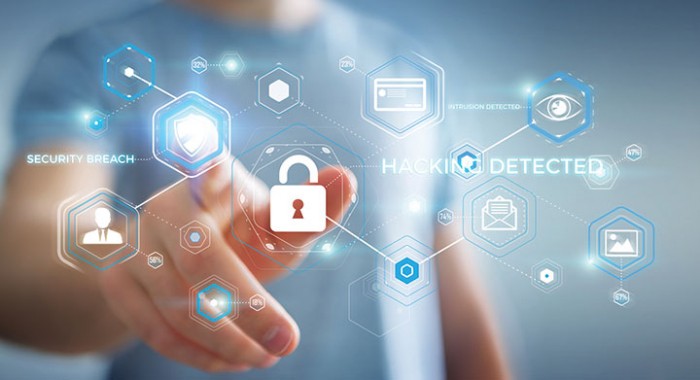
A large number of organizations have observed an increase in the level of sophistication of cyber attacks. Hacking methods are more sophisticated than ever and increasingly rely on previously unknown methods. In response, the Under Defense security team decided to conduct a comprehensive threat hunt. Getting Started with Cyber Threat Detection managed threat detection and response services answer the questions about what threat detection is, why it has become a staple in your security arsenal, and how to get started. It also provides a detailed overview of the tools and artifacts security teams need to stay ahead of the latest threats and respond quickly to potential attacks. Managed discovery (MDR) services are becoming increasingly popular, especially among smaller organizations. MDR is a service that detects malware and suspicious activity and helps organizations quickly respond to these threats. MDR often combines technology with support from external analysts.
Security Training For Your Employees
5 Steps to Prepare for Threat Detection
Proper training is very important when it comes to activities related to Cybersecurity. Before starting, it is important to lay the right foundation. We recommend these five steps to properly prepare your organization and team:

1. Understand the Importance of ongoing Cybersecurity Operations
Examining your processes against a Cybersecurity maturity model is a great way to determine whether you’re ready (or not) for threat scanning. We also recommend that you conduct a security audit to identify your vulnerabilities.
2. Decide How to approach the search for Cyber Threats
Once you’ve defined your cyber sophistication, you can decide whether to do your threat hunting in-house, outsource it entirely to Under Defense, or a combination of both approaches.
3. Determine what the Technical Weaknesses in your Organization are
Review the available tools and determine what else is needed to successfully find threats. How effective are your prevention methods? Do you have or maintain threat detection skills?
4. Identify Skill Gaps
Hunting for cyber threats requires special skills. If you don’t already have the relevant experience, check out Under Defense’s training courses to help you develop the skills you need. Also, consider partnering with Under Defense to develop your team’s skills.
5. Development and implementation of a Cyber-incident response Plan
It is important to have a comprehensive incident response plan in place to ensure that each incident is logged and managed. A well-designed and thought-out response plan that can be implemented fairly quickly can reduce the impact of an attack on your organization. For more information, see the Cyber Threat Search reports.
The Mystery of Dating in a Cyber-World
Factors Enabling Monitoring of Cyber Threats
Successful threat hunting requires a combination of next-generation technology and deep expertise. Preventative practices – reduce unnecessary security alerts. Cyber threat hunters can only perform their role effectively if they are not bombarded with security alerts. One way to achieve this is through the use of top-notch prevention technologies. This allows you to focus on fewer and more accurate detections, simplifying the subsequent investigation and response process. Under Defense blocks cyber threats, allowing you to focus on suspicious signals that require human intervention.
Hunting technology includes advanced detection and response to cyber threats. Under Defense’s cyber threat hunters need input and investigative tools to identify and investigate the potentially malicious activity. Implementing MDR in your organization will help your team identify and thoroughly investigate suspicious activity more quickly. MDR provides input from endpoints and collects signals from various IT environments, including firewalls, mobile devices, email, and cloud solutions. Given that hackers use any opportunity to attack, the larger the signal network, the more likely it is that hackers will be caught. Under Defense is designed specifically for security analysts and IT administrators. Services from Under Defense enable IT, teams, to detect, investigate and respond to Cybersecurity incidents. Get instant access to critical information by choosing from a library of ready-made, editable templates with many ready-made cyber threat hunting scenarios. You can use the trial version of the product to test Under Defense’s ability to detect various cyber threats.
Threat Discovery Tool – Managed Detection and Response (MDR)
As a fully managed service, MDR provides companies with a dedicated team of security analysts who scan for hidden cyber threats 24/7/365. MDR service providers like Under Defense have many advantages over in-house security systems, but the experience is often the most important. The Under Defense engineering team has thousands of hours of experience working with all types of threats. Under Defense engineers learn from attacks on one company and apply those solutions to other customers. The emergence of dangerous situations is monitored around the clock by the teams at Under Defense.
Managed security services became available in the late 1990s when enterprise teams needed to hire experts to remotely manage firewalls and review the log entries that were created. As security management providers evolve and perimeter firewalls become less important, most solutions are shifting from device management to log analysis. This change has increased pressure from practitioners for new commercial management products for MDR detection and response. MDR solutions integrate data collection, correlation, incident response, and data analytics support for enterprise buyers. It also helps address the security skills gap by adding external experts to the company’s team.
The most important selection factors that buyers should consider when choosing an MDR partner are. This core component of the research capability includes the Under Defense MDR vendor’s ability to perform analytical tasks to understand data from managed infrastructure. Research capabilities, including the development of this knowledge within supplier teams, are key success factors for MDR.
How To Choose a Proxy Server For Beginners
Main Features of MDR Under Defense
The best way to distinguish traditional MSS from evolving MDRs is to visualize where these related products fit into the security lifecycle model embodied in the Cybersecurity Framework. One of the main reasons for the success of MDR solutions is that today’s cyber threats are very difficult to prevent. Under Defense’s security teams had to focus primarily on resolving ongoing incidents, responding to actual attacks, or implementing corrective actions needed in response to closed cyber incidents. As a result, there have been some changes in the Cybersecurity industry aimed at detection and response. Customers now have access to Network Detection and Response, Endpoint Detection and Response (EDR), and Enhanced Detection and Response (XDR). Each of these suggestions focuses on current or past events.



